The world is full of things that bear some resemblance to translation between languages while being different in certain ways. The question recently came up at the PEN American Center of whether someone who has translated (into English) poetry composed originally in American Sign Language should be eligible to apply for a PEN Translation Fund grant. I argued that he should be, a position influenced by my experience this past semester of working with a student whose participation in my class (a translation workshop, no less) was facilitated by a pair of ASL signers who translated back and forth everything that was said. Signers always work in pairs because the work is so demanding that they must spell each other every 20 minutes, much like simultaneous interpreters at the United Nations. At one point I had asked a student to read aloud a long list of synonyms from the thesaurus, and I noticed that the signer seemed to be having no trouble keeping up. “Really,” I asked, “you can sign all those different synonyms?” “You have no idea,” she replied, “I’m just getting started.” Sign language does not have written characters, but it is definitely a language, and so I don’t see why a translation from ASL into written English shouldn’t count as a translation. Sure, ASL is a very different sort of linguistic system, but I think the similarities outweigh the differences. On the other hand, a translation into ASL would not be eligible for a PEN grant, because the grants are for translation into written English as opposed to a visual/physical medium. There must be people who translate between ASL and the sign languages associated with other spoken and written languages, but I don’t know anything about that. Yet. But I have recently been re-introduced to a very different sort of visual translation – the rebus, which I had not encountered since childhood – by my friend Mike Gonnella, who among other things is the owner (and baker) of Tivoli Bread and Baking in Tivoli, New York. He also happens to be an accomplished designer of rebi rebuses, puzzles that represent words pictorially, using images whose names homophonically resemble the words. A successful rebus is not only accurate but visually interesting. If you haven’t had the opportunity to try your hand at solving a rebus recently, here’s your chance. I am appending below a series of rebuses Mikee composed this winter based on the lines of the song The Twelve Days of Christmas. He drew one a day on the chalkboard hanging in the bakery. If I presented them sequentially, that would make things too easy, so instead you’ll find them in random order below. But to help you get started, I’ll point out that the first rebus is based on the line “Five gold rings.” Click on any image to see it larger. Happy puzzling!
P.S. I should point out that one of the rebuses contains a Tivoli insider joke: it presupposes knowledge of this local bar.


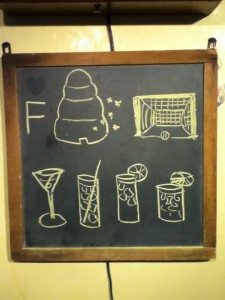
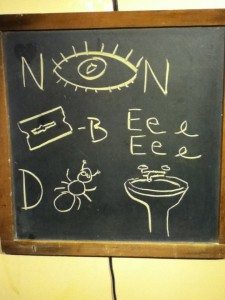
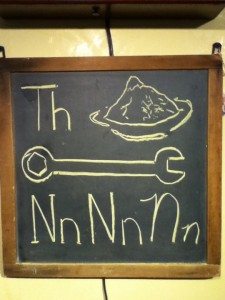
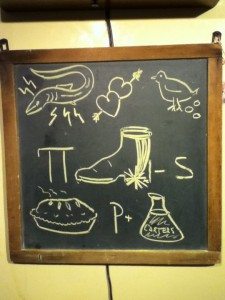
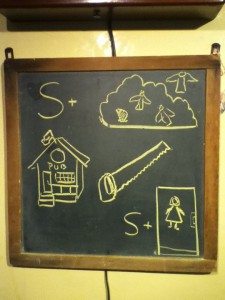
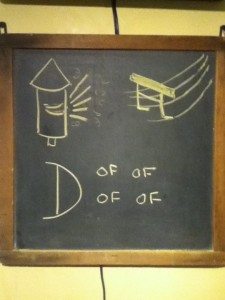
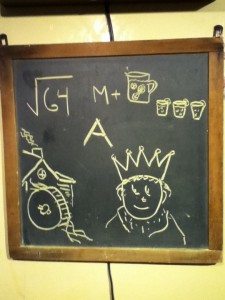

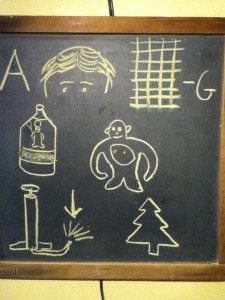
The one for day four is the hardest! Thanks Susan.
I know a couple of interpreters for German sign language. They’ve told me about the special grammar, where a list always starts with the largest item and moves on to the smallest. And there were two very different ‘dialects’ between East and West Germany, with the gap closing up now.
The deaf people I know here have also told me about visits from the USA, which took place with no translators between the separate sign languages, but lots of guesswork and miming.
That is so fascinating. So someone proficient in any sign language is more likely to be able to communicate with others internationally than someone who relies on spoken language.